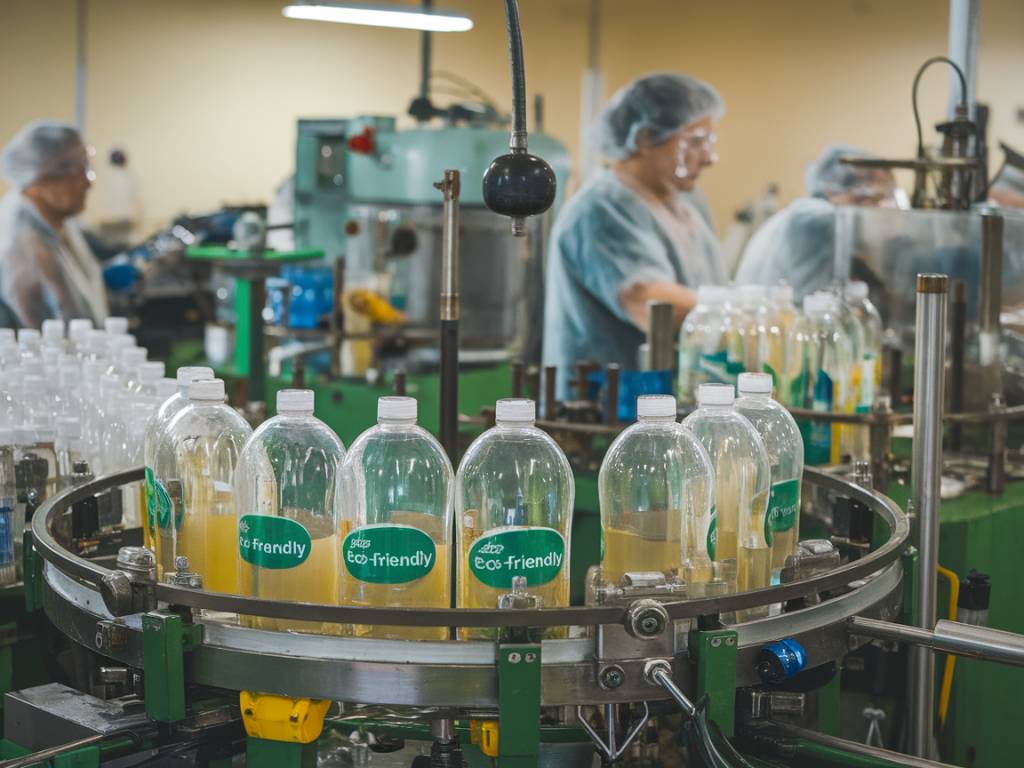In today’s rapidly evolving economic landscape, sustainability continues to take center stage. As supply chains expand globally, the need for innovative packaging solutions that are both efficient and environmentally friendly becomes increasingly crucial. This article explores cutting-edge packaging solutions that promote sustainable practices across supply chains, addressing challenges and highlighting opportunities for improvement.
Understanding the Need for Sustainable Packaging
Sustainability in supply chains is multifaceted, involving environmental, economic, and social dimensions. Traditional packaging methods, often reliant on plastics and other non-biodegradable materials, contribute significantly to environmental degradation. Adopting sustainable packaging solutions helps reduce waste, minimize carbon footprints, and conserve natural resources, fostering a more circular economy.
Types of Innovative Sustainable Packaging Solutions
Several packaging solutions have emerged to address the sustainability challenge, each offering unique benefits:
Biodegradable and Compostable Packaging
Biodegradable and compostable packaging materials are designed to decompose naturally, reducing environmental impact. Common materials include polylactic acid (PLA), derived from corn starch, and other plant-based materials. These options provide an eco-friendly alternative to traditional plastics, breaking down into non-toxic components over time.
Recyclable Packaging
Recyclable packaging solutions focus on maximizing the life cycle of materials by enabling their reuse. Common recyclable materials include paper, cardboard, glass, and certain plastics like PET and HDPE. Implementing efficient recycling practices within supply chains decreases waste and conserves resources.
Reusable Packaging
Reusable packaging systems, such as containers and pallets, are designed for repeated use, reducing the need for single-use packaging. These solutions are particularly beneficial in closed-loop supply chains, where packaging can be returned, cleaned, and reused multiple times, effectively reducing overall waste.
Edible Packaging
Edible packaging, made from natural ingredients such as seaweed, rice, or gelatin, represents a novel approach to reducing packaging waste. Although still in the developmental stages, edible packaging offers significant potential to eliminate waste entirely by being consumed with the product.
Smart Packaging
Smart packaging integrates advanced technology to enhance functionality and reduce waste. Examples include packaging with built-in sensors to monitor product freshness or inventory levels. These innovations can help optimize storage and transportation, minimize spoilage, and reduce unnecessary packaging.
Benefits of Sustainable Packaging in Supply Chains
Sustainable packaging solutions bring numerous benefits to supply chains:
- Environmental Impact: Reducing reliance on non-renewable resources and minimizing waste contributes to a healthier planet.
- Cost Efficiency: Long-term cost savings are realized through reduced material costs, waste disposal fees, and enhanced efficiency.
- Brand Reputation: Companies adopting sustainable packaging practices often see improved brand image and customer loyalty.
- Regulatory Compliance: Staying ahead of increasingly stringent environmental regulations helps prevent legal repercussions and potential fines.
- Innovation: Embracing new technologies and materials can drive innovation, giving companies a competitive edge.
Challenges in Implementing Sustainable Packaging
While sustainable packaging presents numerous benefits, there are challenges to its broader adoption:
- Cost: Initial investments in sustainable materials and technologies can be high, which may deter smaller companies.
- Infrastructure: Efficient recycling and composting systems must be in place to realize the full benefits of sustainable packaging.
- Supply Chain Complexity: Large, global supply chains may struggle to standardize sustainable packaging practices across different regions and partners.
- Consumer Behavior: Educating consumers on the importance of sustainability and encouraging them to adopt eco-friendly practices is crucial.
Case Studies of Successful Sustainable Packaging Implementation
Several companies have successfully integrated sustainable packaging solutions, setting benchmarks for the industry:
Nike’s Sustainable Packaging Initiatives
Nike has implemented several sustainable packaging initiatives, including reducing packaging weight, increasing the use of recycled materials, and eliminating single-use plastics in their operations. Their commitment to sustainable practices has resulted in a significant reduction in their environmental impact.
L’Oréal’s Eco-Design Packaging
L’Oréal has developed an eco-design tool to evaluate the environmental impact of their packaging throughout its life cycle. This initiative has led to significant improvements in packaging sustainability, with many products now featuring recyclable and biodegradable materials.
IKEA’s Innovative Packaging Solutions
IKEA has long been a pioneer in sustainable packaging, utilizing flat-pack designs and minimalistic materials to reduce waste. They have also introduced mushroom-based packaging, which is biodegradable and compostable, further enhancing their environmental efforts.
How to Get Started with Sustainable Packaging
Transitioning to sustainable packaging requires a strategic approach. Here are some steps to get started:
Conduct a Packaging Audit
Assess your current packaging materials and processes to identify areas for improvement. An audit will help you understand the environmental impact of your packaging and pinpoint opportunities for sustainability enhancements.
Research and Select Sustainable Materials
Explore available sustainable packaging materials and technologies, considering factors such as cost, availability, and compatibility with your products. Collaborate with suppliers to source eco-friendly options that meet your specific needs.
Engage Stakeholders
Involve key stakeholders, including suppliers, customers, and employees, in the transition to sustainable packaging. Clear communication and collaboration are essential for successfully implementing new practices and achieving buy-in from all parties involved.
Monitor and Evaluate Progress
Regularly track the performance of your sustainable packaging initiatives to ensure they are meeting your goals. Utilize metrics such as waste reduction, cost savings, and carbon footprint to measure success and identify areas for continuous improvement.
The Future of Sustainable Packaging
Sustainable packaging is poised to play an increasingly vital role in supply chains globally. As technology advances and consumer demand for eco-friendly options grows, companies must stay ahead of the curve by adopting innovative packaging solutions. By doing so, they not only contribute to environmental preservation but also position themselves for long-term success in a competitive marketplace.



